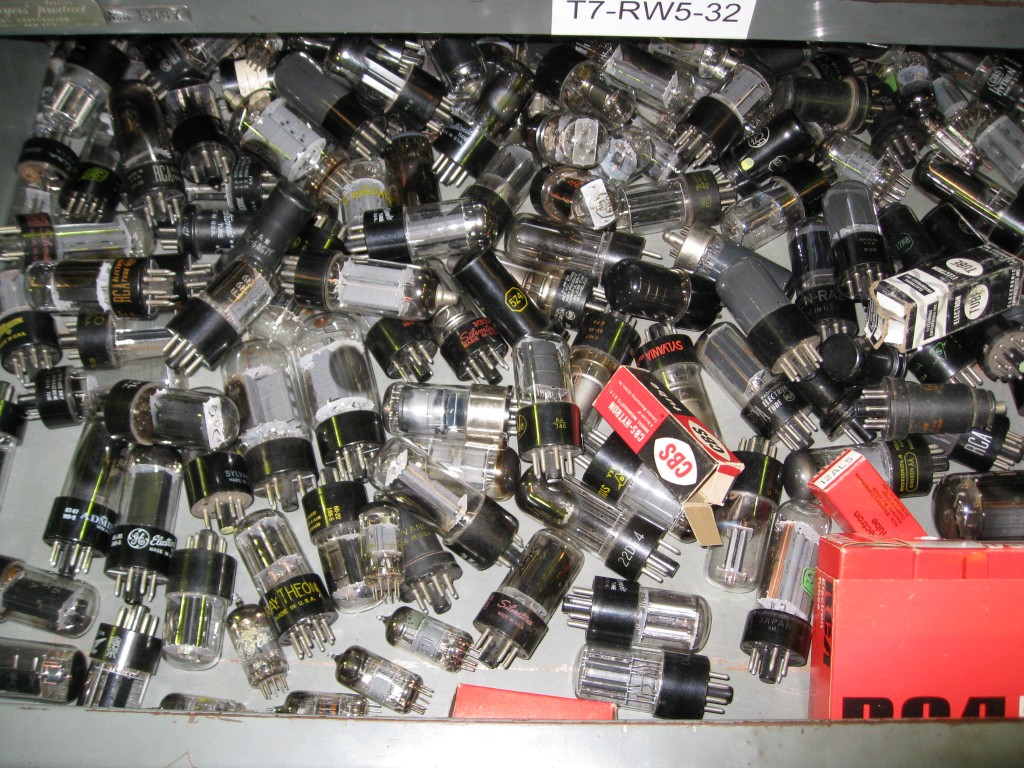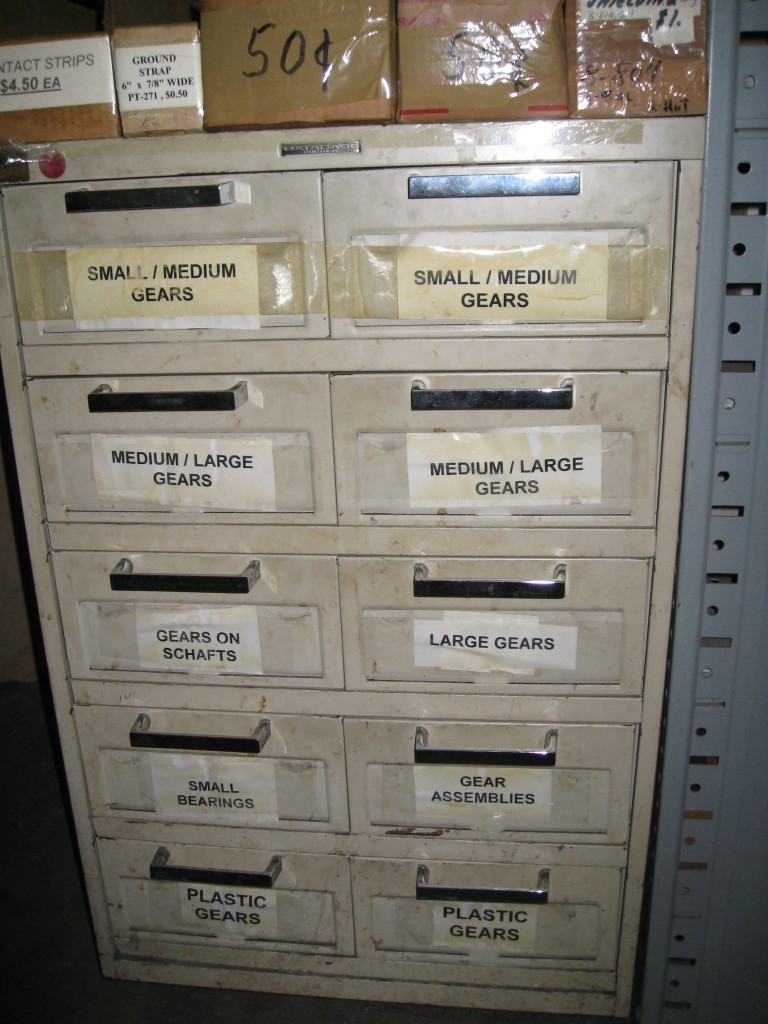Yesterday my son and I took a trip to Electronic Surplus, Cleveland Ohio’s candy store for electronics hobbyists and professionals. From a warehouse building in Mentor, ESI operates both a brick-and-mortar store and the website electronicsurplus.com. This is my home-town surplus dealer, which has been a good source for parts for me. Read on to have a look around.
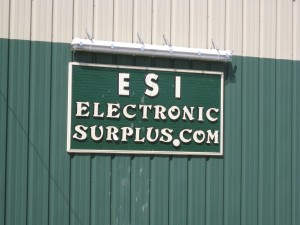 The welcoming sign tells me I’m in the right place. Their location is near a busy intersection, but out of sight of the main roads. An earlier incarnation of the business was known as “Electronic Surplus Inc.”, hence “ESI”. Today the “I” is vestigial — the company is an LLC — but the abbreviation stuck.
The welcoming sign tells me I’m in the right place. Their location is near a busy intersection, but out of sight of the main roads. An earlier incarnation of the business was known as “Electronic Surplus Inc.”, hence “ESI”. Today the “I” is vestigial — the company is an LLC — but the abbreviation stuck.
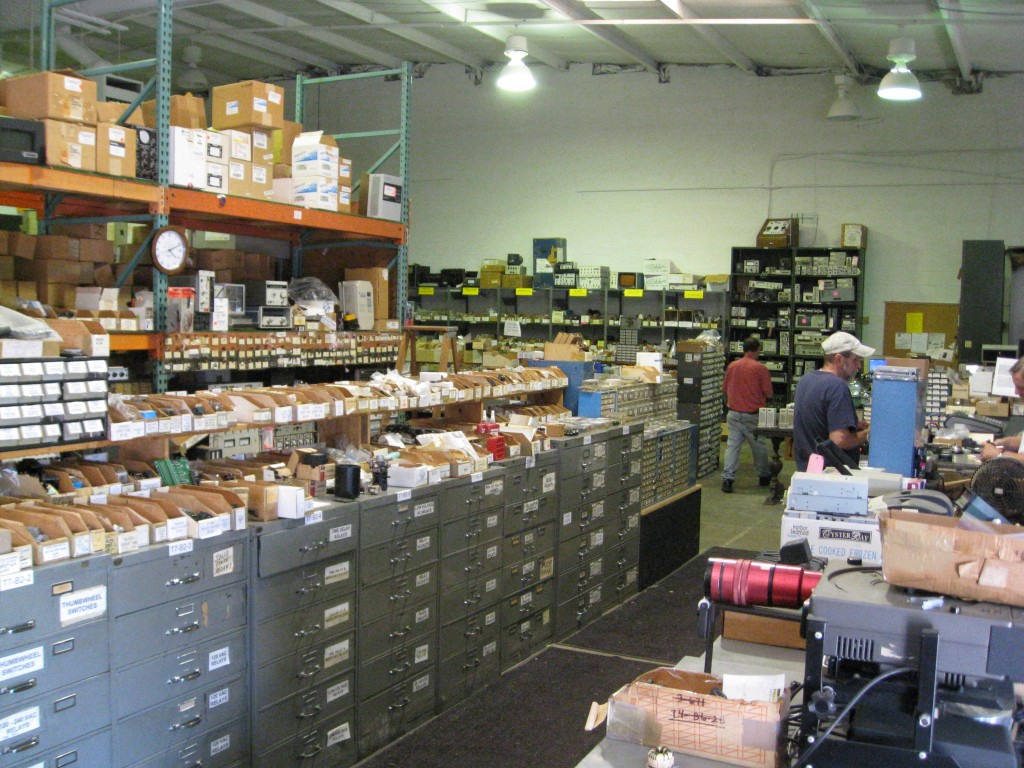 The retail store fills about a quarter of the warehouse-style space, with the rest used for storage and web order fulfillment. The store has an odd C-shaped floorplan. This is the view from just inside the front door. The grey drawers contain a variety of parts. The shelves behind them have some of the test equipment that is for sale.
The retail store fills about a quarter of the warehouse-style space, with the rest used for storage and web order fulfillment. The store has an odd C-shaped floorplan. This is the view from just inside the front door. The grey drawers contain a variety of parts. The shelves behind them have some of the test equipment that is for sale.
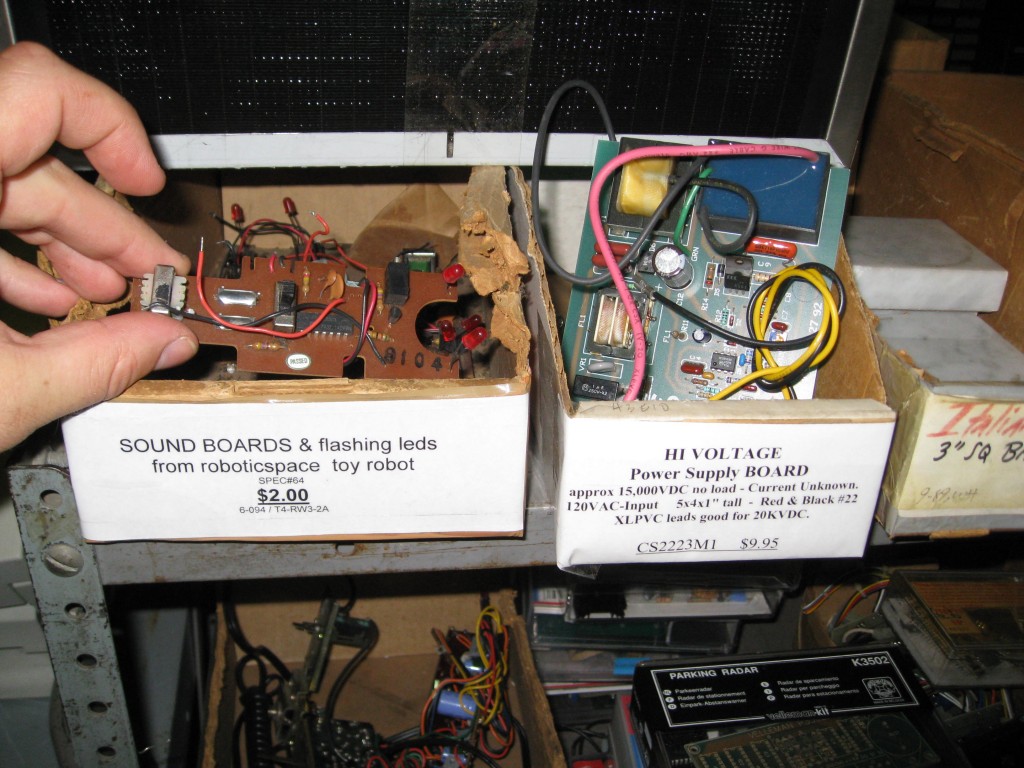 Not far from the counter is a selection of odd circuit boards and modules. This one is a sound and light board from a toy, and next to it is a high voltage supply board. Out of sight to the right was an LM317 power supply board. I was tempted by that, but decided it would be a better idea to use up the ones I already have in my parts collection.
Not far from the counter is a selection of odd circuit boards and modules. This one is a sound and light board from a toy, and next to it is a high voltage supply board. Out of sight to the right was an LM317 power supply board. I was tempted by that, but decided it would be a better idea to use up the ones I already have in my parts collection.
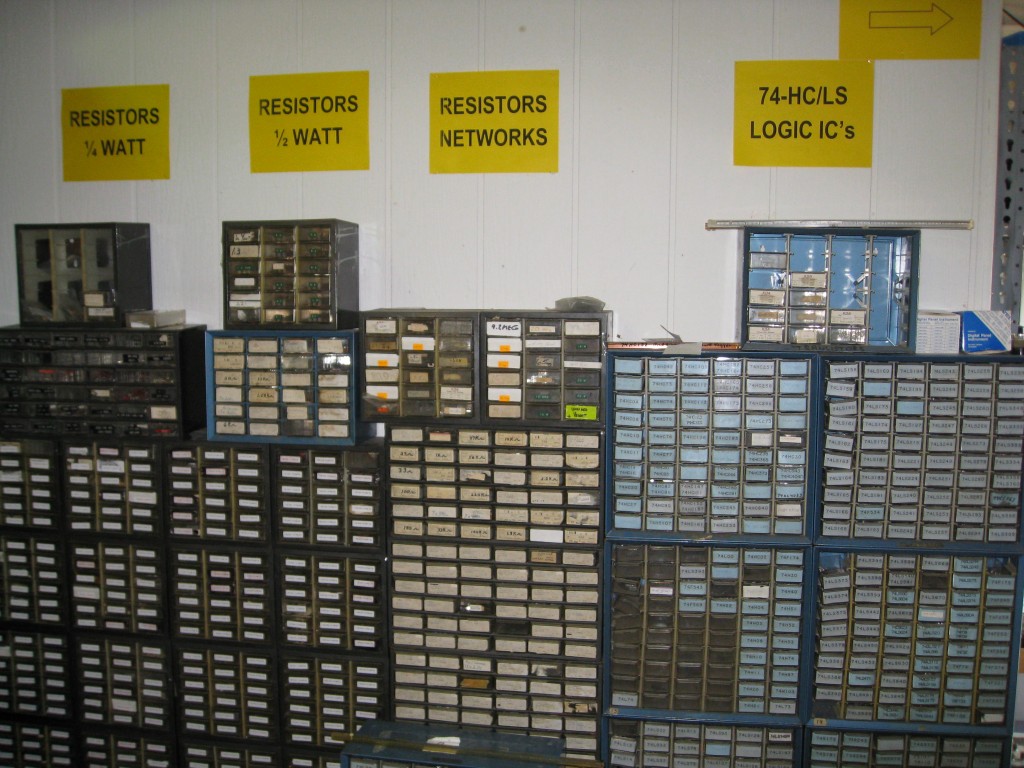 What’s a surplus store without plastic-drawer organizers? Beyond the 74HC and 74LS parts promised by the sign, the drawers also have many of the older logic families, such as 74H and 74S. I can’t imagine much demand for 74H parts these days. They are basically the original 7400 series with the resistors reduced for higher speed and higher power draw. They would still be useful for casual work and, of course, maintenance of old gear.
What’s a surplus store without plastic-drawer organizers? Beyond the 74HC and 74LS parts promised by the sign, the drawers also have many of the older logic families, such as 74H and 74S. I can’t imagine much demand for 74H parts these days. They are basically the original 7400 series with the resistors reduced for higher speed and higher power draw. They would still be useful for casual work and, of course, maintenance of old gear.
The stock in the drawers I looked through was almost entirely through-hole. There wasn’t much selection for folks who prefer surface-mount.
There were two or three drawers of vacuum tubes, some boxed and some loose. I couldn’t tell if they were unused or pulls from equipment. I’ve never done a tube project, but perhaps a tube afficionado would find some gems in here.
The place may be about electronics, but there is a bit for the mechanically inclined. A robot builder might find some goodies in here. These were only some of the gears, by the way.
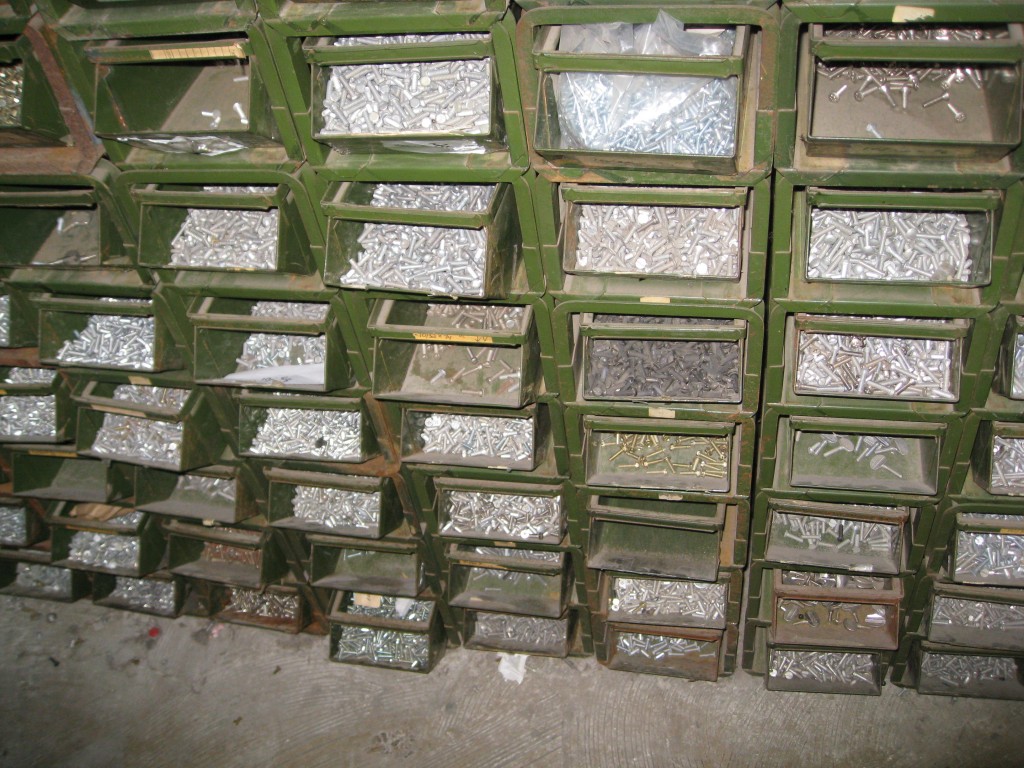 Even an electronics guy can’t escape some mechanical parts: bolts, standoffs, and the like. These bins lined perhaps 20 linear feet of aisle with miscellaneous nuts and bolts. Standoffs and the like were in bins and drawers elsewhere in the store.
Even an electronics guy can’t escape some mechanical parts: bolts, standoffs, and the like. These bins lined perhaps 20 linear feet of aisle with miscellaneous nuts and bolts. Standoffs and the like were in bins and drawers elsewhere in the store.
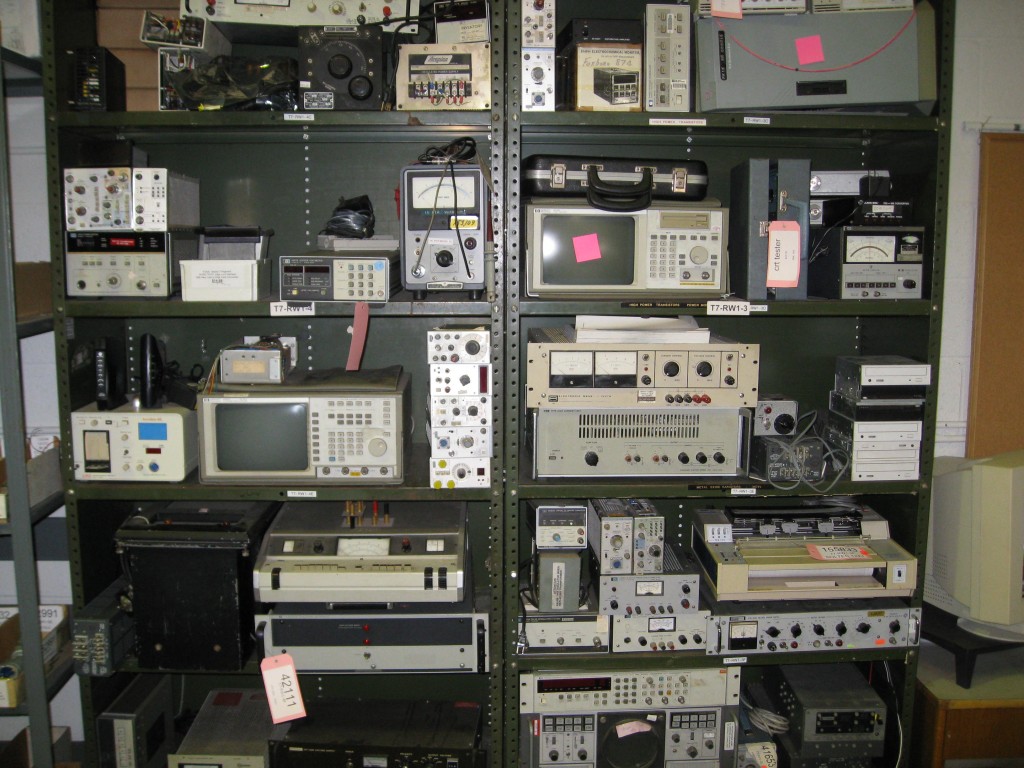 ESI has a good-sized test equipment stock for a dealer that is not specialized in that area. There were a few HP network analyzer parts (that’s a gain/phase meter in the upper right corner), plus plenty of meters, power supplies, signal sources, and plugins for the Tektronix 7000-series ‘scopes and TM500 mainframes.
ESI has a good-sized test equipment stock for a dealer that is not specialized in that area. There were a few HP network analyzer parts (that’s a gain/phase meter in the upper right corner), plus plenty of meters, power supplies, signal sources, and plugins for the Tektronix 7000-series ‘scopes and TM500 mainframes.
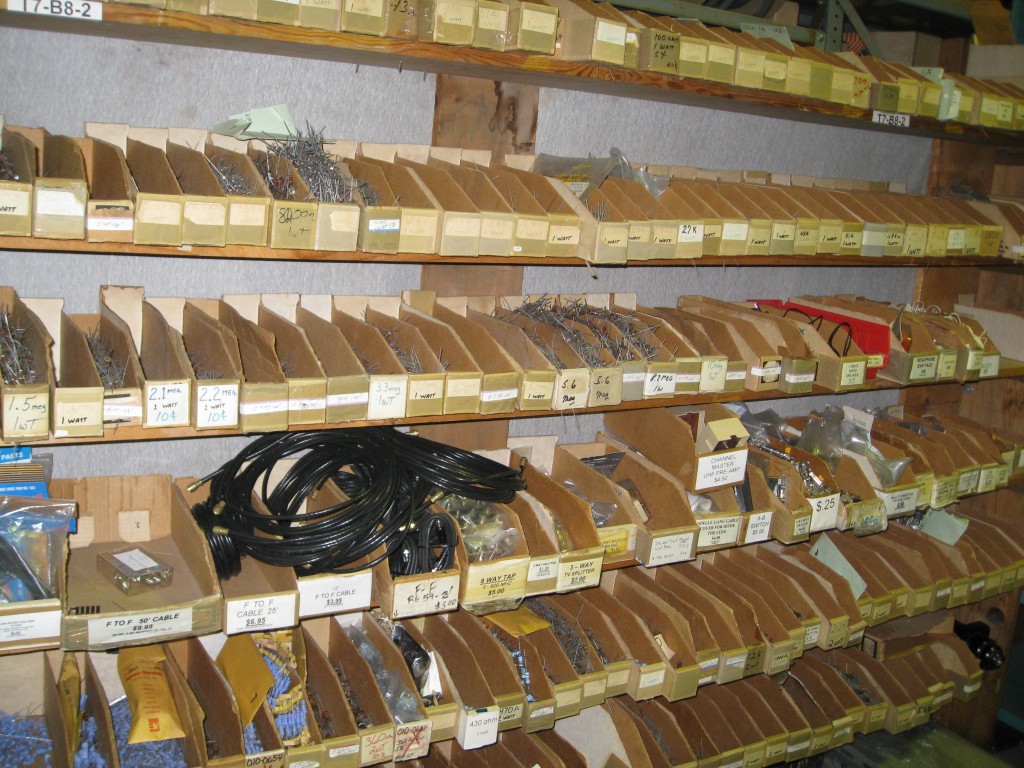 Lots of resistors — and what’s that, some coax and an RF modulator? While I wouldn’t call ESI disorganized, it is not a place where you can go right to what you want. Coax-related parts are grouped in several different locations, and there are at least two places to look for resistors.
Lots of resistors — and what’s that, some coax and an RF modulator? While I wouldn’t call ESI disorganized, it is not a place where you can go right to what you want. Coax-related parts are grouped in several different locations, and there are at least two places to look for resistors.
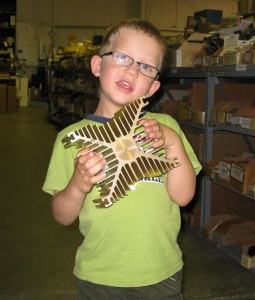 “Daddy, what’s this for? It’s shiny!” This is one of the largest heatsinks on display. ESI has a good variety of small heatsinks, e.g. for TO-3 and TO-220 packages, but only a few large ones. When I need to get a few watts from a TO-220, I use a heatsink from ESI, but for high-power RF or audio, it would be a little hit or miss to find a suitable heatsink here.
“Daddy, what’s this for? It’s shiny!” This is one of the largest heatsinks on display. ESI has a good variety of small heatsinks, e.g. for TO-3 and TO-220 packages, but only a few large ones. When I need to get a few watts from a TO-220, I use a heatsink from ESI, but for high-power RF or audio, it would be a little hit or miss to find a suitable heatsink here.
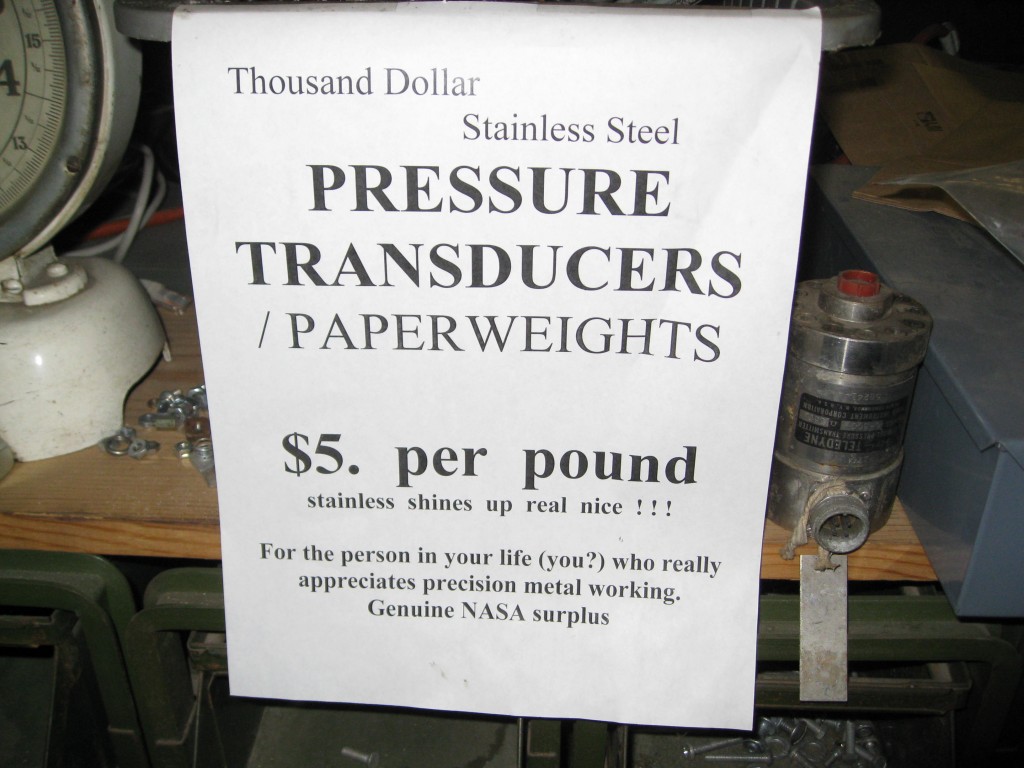
I got a chuckle out of this sign.
Although I resolved not to buy any more test gear until I have finished getting the “junque” out of the basement, I saw a piece of equipment that I’ve been wanting for ages, at a bargain price. How could I decline?
Allow me to present my new HP 334A distortion analyzer:
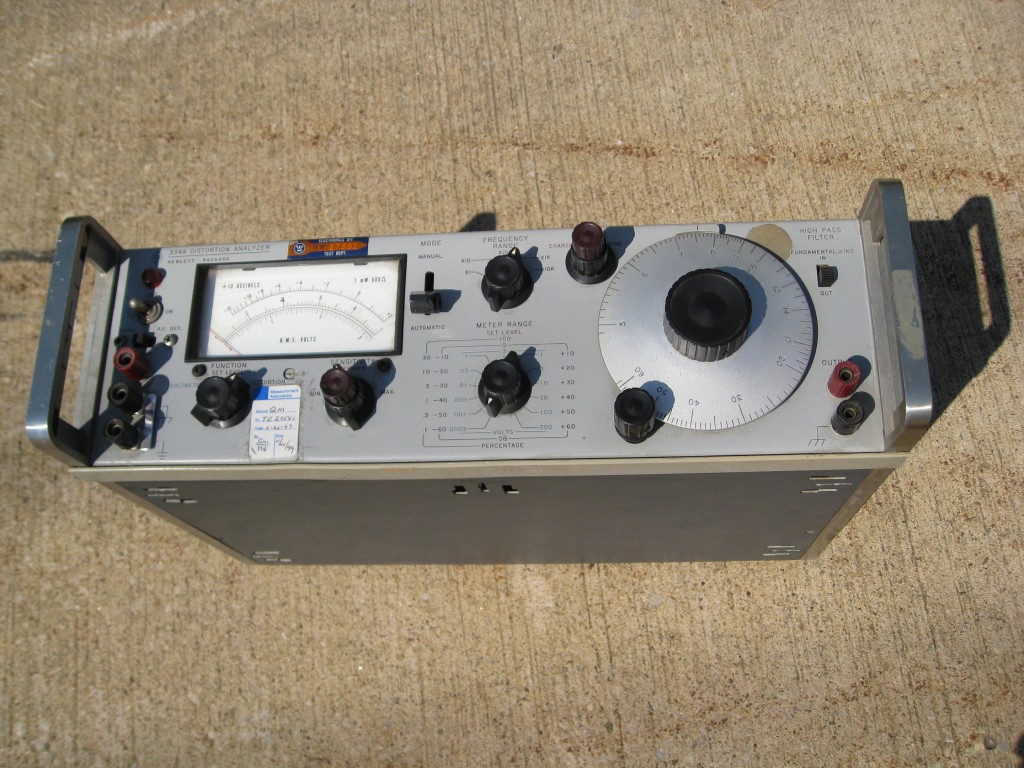 This instrument is designed to null out the fundamental frequency of an audio waveform, then measure the voltage of the remaining signal. Thus, it can be used to measure the distortion riding on a sine wave. It also has an RF detector for measuring AM signals, and it can be used as an AC voltmeter.
This instrument is designed to null out the fundamental frequency of an audio waveform, then measure the voltage of the remaining signal. Thus, it can be used to measure the distortion riding on a sine wave. It also has an RF detector for measuring AM signals, and it can be used as an AC voltmeter.
It is hard for me to make an unbiased assessment of ESI, since I have shopped there for years. It is the benchmark by which I measure other electronic surplus stores. Taking a step back to look at the big picture, though, Electronic Surplus has a broad selection of parts, with no marked specialty. They have a strength in older ICs and passive components, with additional strengths in wire, cable and test equipment. Few complex projects (of the kind I like, at least) could be constructed entirely from ESI parts, but they have a good selection of unusual parts that may make the core of a project, along with many of the commodity components to go with that core. For example, they have a selection of current regulator diodes and even a few tunnel diodes.
Electronic Surplus is a worthwhile drive for any electronics hobbyist in the Northeast Ohio area, and it is worth a stop for anyone visiting town or driving by on I-90. For those farther away, ESI has an extensive web store.
Electronic Surplus
8755 Munson Road, #6
Mentor, Ohio 44060
USA
http://electronicsurplus.com/
